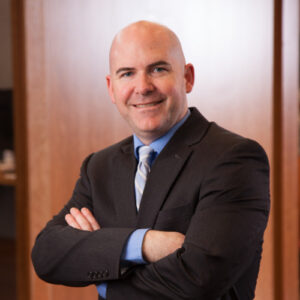Recruitment Strategies to Help Senior Care Facilities Meet the New CMS Staffing Requirements
With the finalization of the Centers for Medicare & Medicaid Services (CMS) Minimum Staffing Standards for Long-Term Care Facilities on April 22, facilities must prepare to meet the new minimum staffing requirements. Requirements for nursing homes include:
- Providing at least 3.48 hours of nursing care per resident day.
- Including at least 0.55 hours per resident day of registered nurse care.
- Including 2.45 hours per day of direct nurse aide care.
- A RN must be onsite 24/7.
In part one of this series, industry experts shared their reactions to the finalized standards and their impact on the industry. In this article, those same experts provide actionable steps that facilities can take to work on meeting the new staffing requirements.
How Facilities Currently Below the Staffing Standards Can Work to Meet the New Requirements

Dr. Ahzam Afzal, CEO & co-founder of Puzzle Healthcare
According to the finalized rule, CMS will implement the new staffing requirements in three phases over a three-year period for non-rural facilities. These facilities must meet the 3.48 hours of nursing care per day requirement within two years of the rule’s publication. Within three years of the rule’s publication, the facilities must meet the requirement of providing at least 0.55 Registered Nurse care per day and 2.45 hours of direct nurse aide care.
Rural facilities have an extended timeline. They must meet the 3.48 hours per resident day total nurse staffing requirement and 24/7 registered nurse requirement within three years of the rule’s publication. The 0.55 RN and 2.45 direct nurse aide care requirements must be met within five years of the rule’s publication.
Dr. Ahzam Afzal, CEO & co-founder of Puzzle Healthcare, explains that it’s crucial for nursing homes below the staffing standards to address the challenge proactively. He notes that he’s seen several strategies be successful in beginning the recruiting process:
- Conduct a workforce analysis: Afzal recommends beginning the recruiting process by performing a comprehensive workforce analysis. The analysis helps to understand current staffing levels, identify staffing gaps, and determine specific staffing needs.
- Develop an attractive employer brand: “To attract quality candidates, nursing homes must position themselves as desirable places to work which involves promoting a positive work environment, highlighting benefits and opportunities for professional development, and showcasing testimonials from current employees about the supportive and fulfilling nature of their work,” explains Afzal.
- Implement competitive compensation packages: Afzal explains that to attract and retain staff, facilities must offer competitive compensation packages such as higher wages, sign-on bonuses, and flexible working conditions.
- Leverage technology: Facilities can use online platforms and social media for recruitment to broaden their reach and improve hiring efficiency. “Additionally, implementing applicant tracking systems can help streamline the recruitment process, making it easier to manage applications and communicate with candidates,” says Afzal.
- Focus on retention: “Recruiting staff is just one part of the challenge; retaining them is equally important,” Afzal notes. He encourages facilities to use strategies like providing a supportive work culture, offering mentorship programs, and providing regular training to help keep staff engaged and reduce turnover.
- Engage with educational institutions: “Building relationships with local nursing schools, vocational training programs, and universities can create a pipeline of new graduates who are ready to enter the workforce,” says Afzal. He notes that offering internships, externships, and part-time positions can also support students as they transition into a full-time role.
- Network within the community: Job fairs, community events, and professional networking meetings can be excellent ways to increase a facility’s visibility among potential applicants.

Carrie O’Connell, RN, vice president of clinical strategy, WellSky
Carrie O’Connell, RN, vice president of clinical strategy, WellSky, notes that facilities need to take a new approach to recruiting staff. “The workforce is changing and one size does not fit all,” she says. “As an example, recruiting an experienced nurse who is thinking of retiring early because of burnout is very different than messaging used to reach the newer grads. Both could play an important role in your facility’s success.”
O’Connell notes that while factors like a positive workplace culture, a competitive compensation package, work-life balance, and a safe working environment are all important, facilities need to focus on other factors, too. “Demonstrating your mission and dedication to your residents’ improved lives is very compelling to people who choose healthcare as their occupation,” she notes. “Investing in technology that improves the lives of the people you are treating while empowering your clinicians to be their best selves with the right information, at the right time, with safety safeguards along the way, is a winning strategy.” O’Connell also states that investing in AI tools and technology can have a significant impact on caregivers’ abilities to focus more on residents and less on administrative tasks.
How Facilities Can Meet the RN Requirement
For facilities that don’t currently have an RN on 24/7, meeting the requirement poses another challenge. “Given the competitive healthcare landscape where registered nurses (RNs) can often secure higher wages and potentially more dynamic working environments in hospitals, attracting them to nursing homes is a significant challenge that requires a strategic approach,” says Afzal. In addition to standard benefits like competitive compensation packages and flexible working conditions, Afzal suggests several strategies to attract RNs:
- Professional development opportunities: Nursing homes may be able to better attract RNs by investing in professional development through tuition reimbursement programs for advanced degrees. Facilities can also provide RNs with access to continued education courses.
- Specialized roles and career pathways: Afzal explains that creating specialized roles within the nursing homes can give RNs unique pathways that they don’t typically receive in hospital settings. “For example, roles focused on geriatric care, rehabilitation, or chronic disease management can offer RNs a niche area of expertise that is intellectually stimulating and professionally rewarding,” Afzal explains.
- Mission-driven work: Since RNs are often drawn to roles where they feel they can make a significant impact on patient lives, nursing homes can highlight the critical role that RNs play in resident lives.
- Use of technology: Nursing homes can incorporate advanced healthcare technologies to reduce physical strain and make the job more appealing to tech-savvy RNs.
O’Connell explains that the challenge of recruiting RNs isn’t a new one, since facilities had to find new models to deliver care during the pandemic. “The facilities that have excelled in retaining and attracting staff have become creative, with a solid foundation of a great working culture,” she says. “And I don’t mean a pizza party once a quarter. Leaders who hear, acknowledge, address, and create a space for staff concerns to be seen/heard have teams who feel valued. These leaders encourage all activities that promote wellbeing, including breaks, PTO, and flexible schedules.”
Optimized workflows supported by technology are also crucial. “Having technology with evidence-based order-set and care plans with real-time alerts significantly reduces nurses feeling that they need to be experts and increases confidence in the care they deliver,” O’Connell explains. “Improving resident-to-staff ratios is a common request, and this rule could be a vehicle to attract some burned out nurses from hospitals, promoting improved work/life balance with a manageable assignment and leaving on time.”
Considering the Impacts of Staffing Requirements
Afzal notes that the federal staffing requirements are not just a challenge, but also an opportunity for the long-term care industry to elevate standards and reimagine how health care is delivered. “The increased staffing standards should be seen as a component of a broader strategy aimed at improving overall patient care,” he says.
Successfully implementing the standards will require collaboration between stakeholders, including healthcare providers, government agencies, educational institutions, and technology partners. “Policymakers and industry leaders must consider the financial realities of implementing these standards, allotting adequate funding and support to ensure that facilities can meet these requirements without compromising the quality of care or financial stability,” says Afzal. “As staffing levels increase, there should also be a renewed focus on engaging patients and their families in the care process. Higher staffing ratios create more opportunities for meaningful interactions, which can enhance patient satisfaction and outcomes.”

Paige Cerulli is a contributing writer to i Advance Senior Care.
Related Articles
Topics: Business Marketing Including Social Media and CRM , Facility management , Featured Articles , General Technology , Information Technology , Medicare/Medicaid , Regulatory Compliance , Rehabilitation , Staffing , Training











